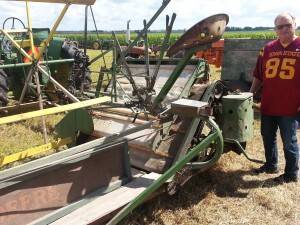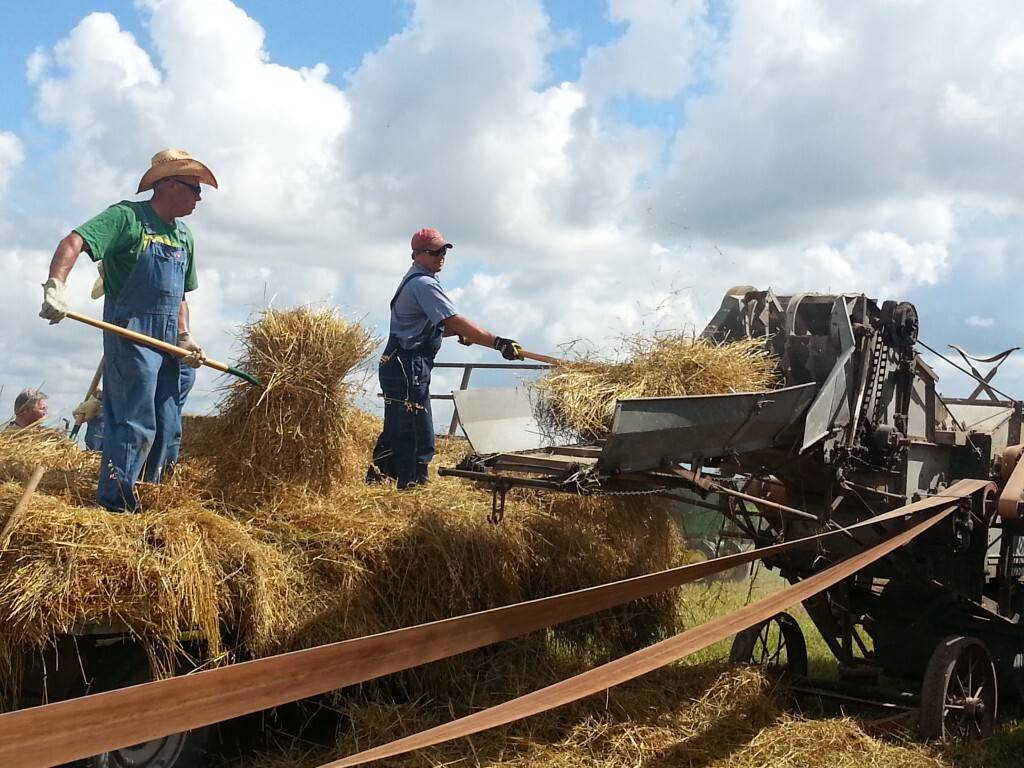 “To appreciate farming today, one must understand history” was the main point I made in last week’s blog post. A few days after I posted that blog, I had the opportunity for a hands-on history lesson at the 3rd Annual Norris Threshing Day northwest of Mason City, Iowa.
“To appreciate farming today, one must understand history” was the main point I made in last week’s blog post. A few days after I posted that blog, I had the opportunity for a hands-on history lesson at the 3rd Annual Norris Threshing Day northwest of Mason City, Iowa.
It was a beautiful, late summer, Saturday afternoon. Some clouds floated by, giving a little shade once in a while, and a nice breeze was blowing. It was just one of those days when you’re thankful to be alive and able to enjoy the great outdoors.
As my wife, Janice, and I drove to into the lane, a nice A John Deere was popping away and singing on two cylinders. It was attached by a long belt to a threshing machine. This machine is like a stationary combine, separating the grain from the rest of the oat plant. The difference is that oats must be fed into the threshing machine, by hand, from a flat rack.
Preparing for threshing requires advanced preparation. The oats are first cut and put into shocks, which are bundles of plants tied together, days before. The shocks are then picked up by hand and put on flat racks, which are four-wheeled wagons that are pulled beside the thresher. The bundles are then thrown onto a conveyer with a pitch fork and conveyed into the thresher to be separated.
In the three hours that I was watching the threshers, less than 100 bushels of oats went into the wagon. Remember, this was just the threshing part. Hours were spent in advance, cutting and shocking the oats. Consider this… A modern combine can do ALL of these steps and harvest about the same amount of grain in 10 minutes!
Charlie Norris and his family had some other older machinery lined up around the field. Janice and I took a nice trip down memory lane, reminiscing about the “good old days.” We looked at outdated equipment like moldboard plows and small field cultivators, which were used to turn the soil black when I was a kid. (Today we leave crop residue on top of the soil to keep it from blowing away or washing away.)
I also saw many older John Deere tractors like the ones I used when I started farming in the 1970s and couldn’t help but think of all the advancements that have been made. The technology we use today has made farming so much less labor intensive – and safer. The hard labor and dangerous equipment used in the “good old days” played a large role in many farm kids getting an education and moving to the city for better pay, better hours, and not all the manual labor!
Thanks to new technology, many 30- to 45-years-old and are either returning to their rural roots or moving to rural areas for the first time. They’re bring high skill sets, such as college degrees and master’s degrees, and have a career path in place with outside connections.
Why the rural rebirth? Come see for yourself! A fall harvest bloggers tour, like we host in Franklin County, is a great way to see modern day farming in action. I’m on the planning committee for it this fall, so let me know if you’re interested in attending, even if you don’t blog. You can also learn more about modern farming by following along daily with the Iowa Food & Family Project. And, of course, you can always ask me questions!

